Best Scandinavian-Inspired Valentine’s Day Decor Ideas
As someone who’s always been captivated by the serene beauty of Scandinavian design, I’ve discovered that bringing Nordic elements into Valentine’s Day decorating creates an unexpectedly magical atmosphere. I’m excited to share how you can transform your space into a cozy, romantic haven using Scandinavian-inspired decor ideas that perfectly balance minimalism with warmth.



Embracing Hygge in Your Valentine’s Day Celebrations
The Danish concept of hygge (pronounced “hoo-ga”) couldn’t be more perfect for Valentine’s Day. I’ve found that incorporating this philosophy of coziness and contentment creates an intimate atmosphere that goes beyond traditional red hearts and roses. Let me show you how to blend Scandinavian simplicity with romantic touches for a fresh take on Valentine’s Day decor.
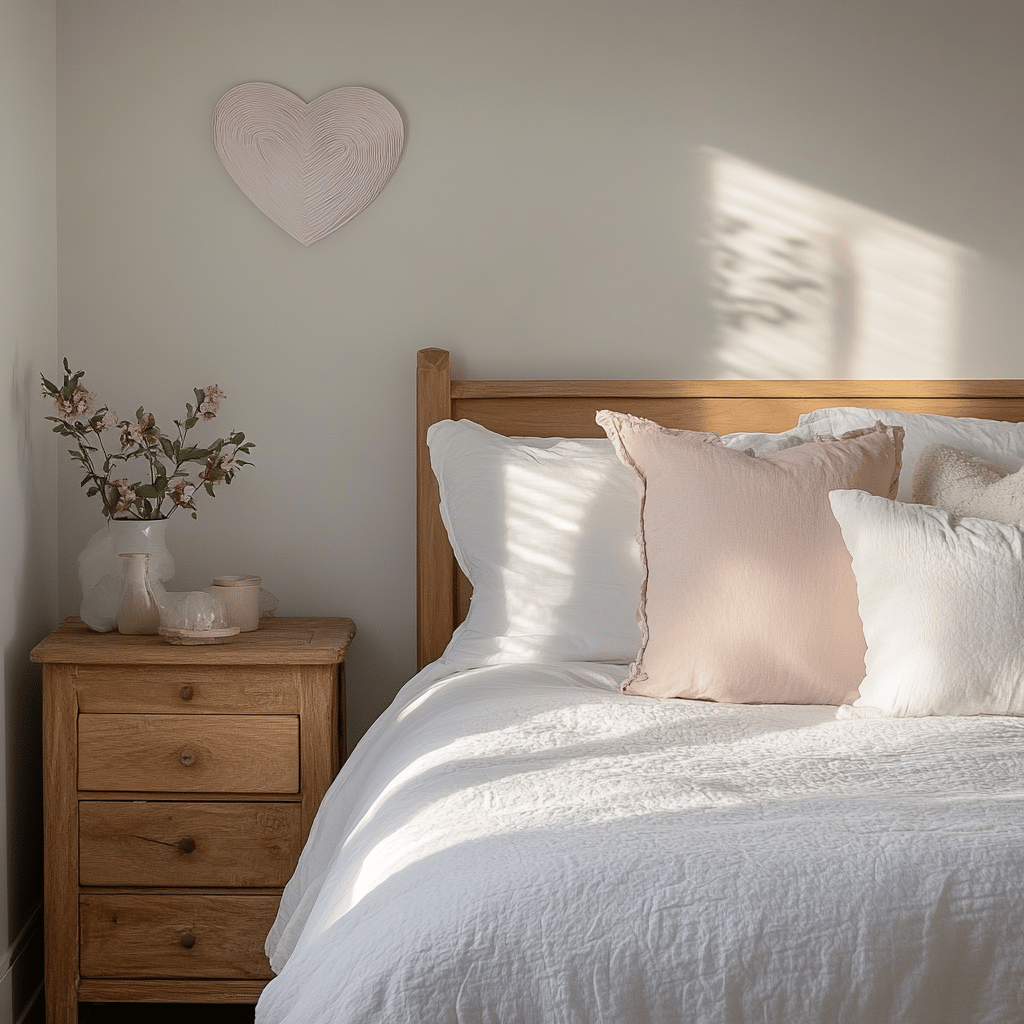
The Color Palette: Beyond Traditional Reds
When I first started exploring Scandinavian Valentine’s Day decor, I was struck by how different the color approach is from traditional Valentine’s schemes. Instead of bright reds and pinks, I work with:
A base of warm whites and soft creams that create a peaceful foundation Gentle blush pinks that add subtle romance without overwhelming the space Muted grays that provide sophisticated contrast Natural wood tones that bring organic warmth Deep burgundy accents that offer rich pops of color without feeling overpowering
This refined palette helps create a more sophisticated and calming romantic atmosphere that feels authentic to both Valentine’s Day and Scandinavian design principles.

Natural Elements as Your Foundation
I’ve learned that incorporating natural elements is essential to achieving that authentic Scandinavian feel. In my experience, the following additions make a significant impact:
Birch branches arranged in tall vases create striking vertical elements while maintaining that characteristic Nordic simplicity. I love how they bring a bit of the outdoors in and can be decorated with small paper hearts or tiny LED lights.
Pine cones, when painted in soft whites or left natural, make perfect table scatter. Sometimes I’ll add a light dusting of metallic paint to their tips for a subtle sparkle that catches candlelight beautifully.
Fresh greenery, particularly eucalyptus and pine branches, adds organic texture and a wonderful natural scent. I’ve found that mixing these with a few strategic roses or ranunculus creates the perfect balance between Scandinavian restraint and Valentine’s romance.
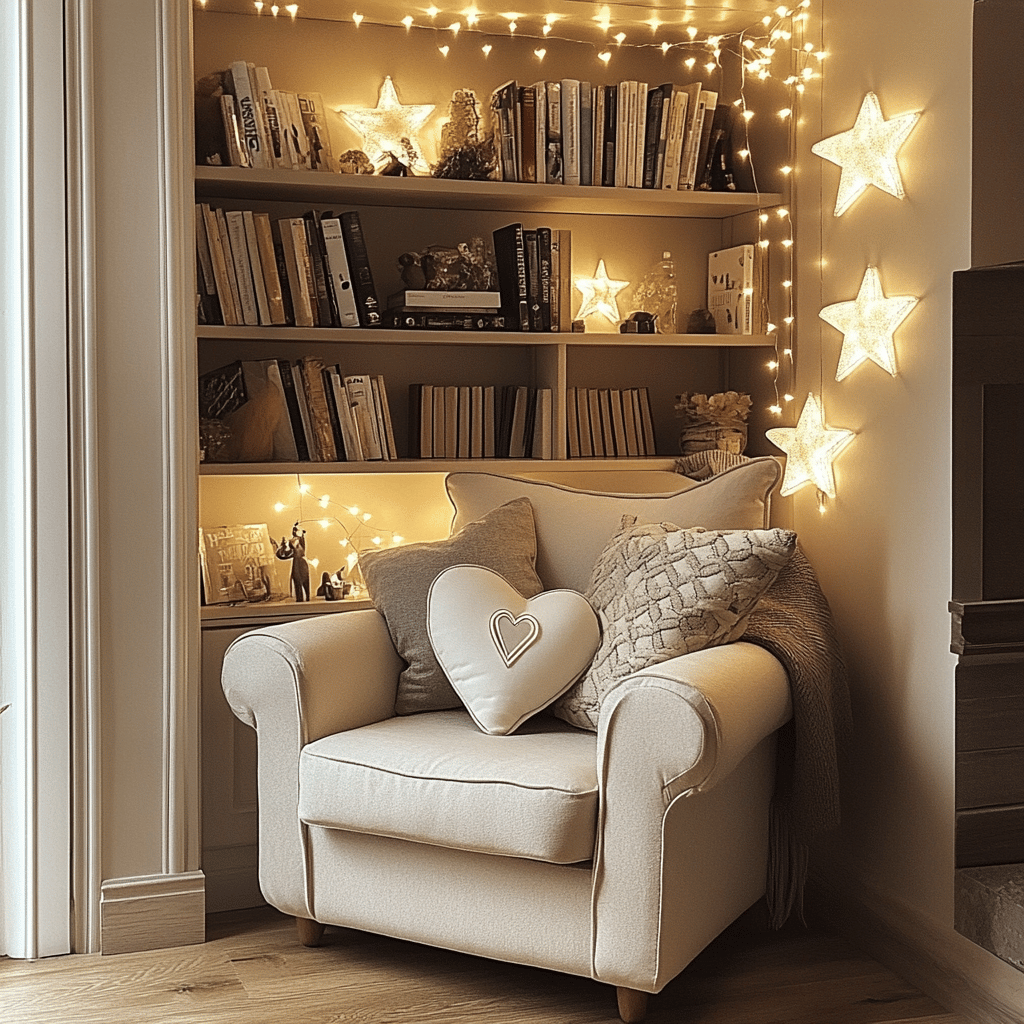
Lighting for Love: Creating Ambient Warmth
Lighting plays a crucial role in Scandinavian design, and I’ve discovered it’s particularly important for setting a romantic mood. Here’s how I approach it:
White candles of varying heights grouped together create a warm, inviting glow. I prefer unscented ones to keep the atmosphere pure and clean.
Paper star lanterns, a staple in Scandinavian homes during dark winters, cast beautiful shadows and add whimsy to your Valentine’s setup.
Fairy lights strung inside clear glass jars or woven through birch branches provide gentle illumination that feels both modern and magical.
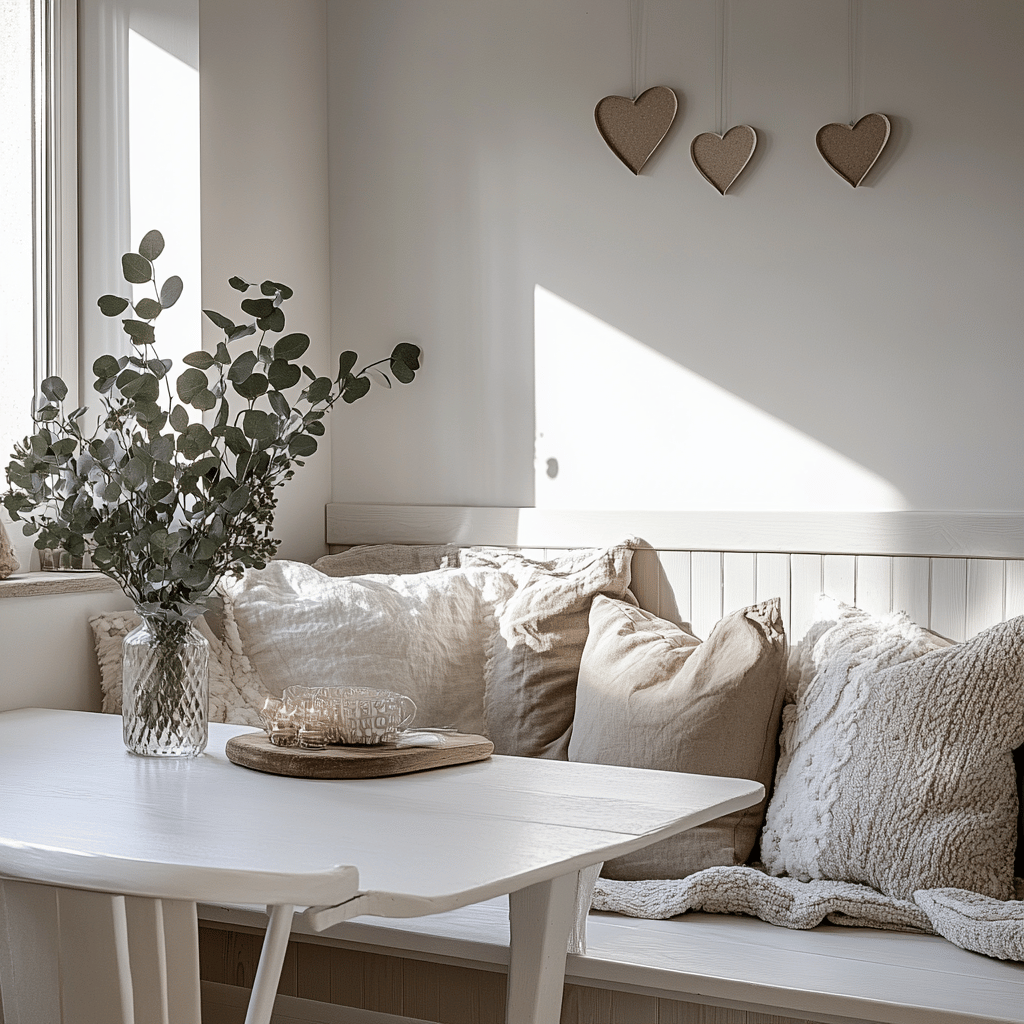
Textiles: Adding Layers of Love
Textiles are where you can really amp up the cozy factor. I’ve found success with:
Chunky knit blankets in cream or soft pink draped over chairs or couches Natural linen table runners with subtle Valentine’s motifs Sheepskin throws that add incredible texture and warmth Simple heart-patterned pillows in muted tones that nod to the holiday without overwhelming the space

DIY Decorations with Scandinavian Simplicity
One of my favorite aspects of Scandinavian design is its emphasis on handmade elements. Here are some DIY projects I’ve found particularly successful:
Paper Heart Garlands: Using white and cream papers, I create simple heart garlands that look stunning against white walls. The key is to keep the design clean and geometric.
Natural Twig Hearts: I collect small twigs and form them into heart shapes, securing them with thin wire. These look beautiful hung on walls or propped on shelves.
Woven Paper Hearts: This traditional Scandinavian craft (called julehjerte) can be adapted for Valentine’s Day using softer colors. I love making these in various sizes to hang from windows or arrange on tables.

Table Settings for Intimate Moments
When it comes to table settings, I focus on creating an intimate atmosphere that encourages connection. Here’s my approach:
Simple white plates paired with natural linen napkins Wooden serving boards for a casual, welcoming feel Clear glass vases with single stem flowers or branches Handmade place cards written in clean, simple typography Metal or wooden candleholders with white taper candles
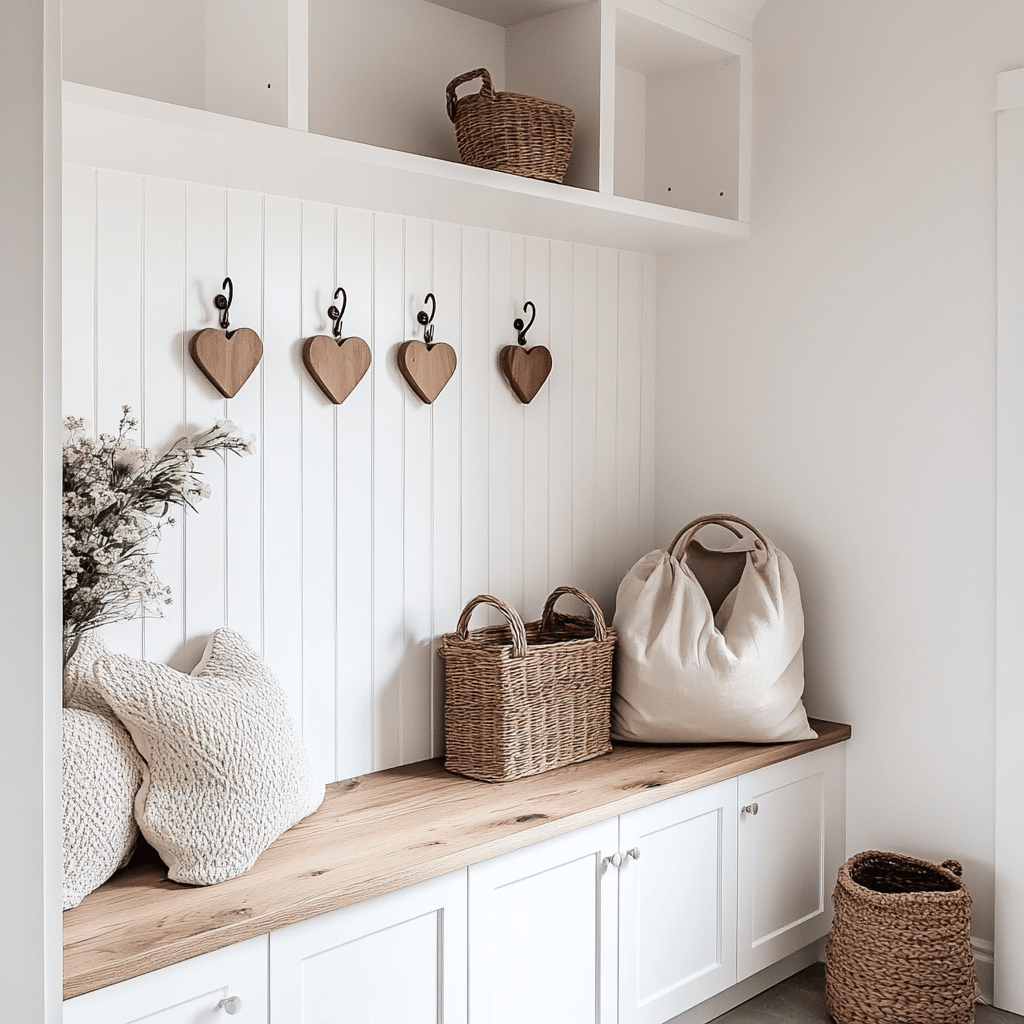
Small Details That Make a Big Impact
I’ve found that in Scandinavian design, it’s often the subtle details that create the most impact. Here are some of my favorite small touches:
Tiny paper hearts scattered across tables or windowsills Simple valentine messages written in clean typography and framed in natural wood Small potted white flowers like cyclamen or orchids Heart-shaped cookie cutters in copper or brass displayed as decorative elements
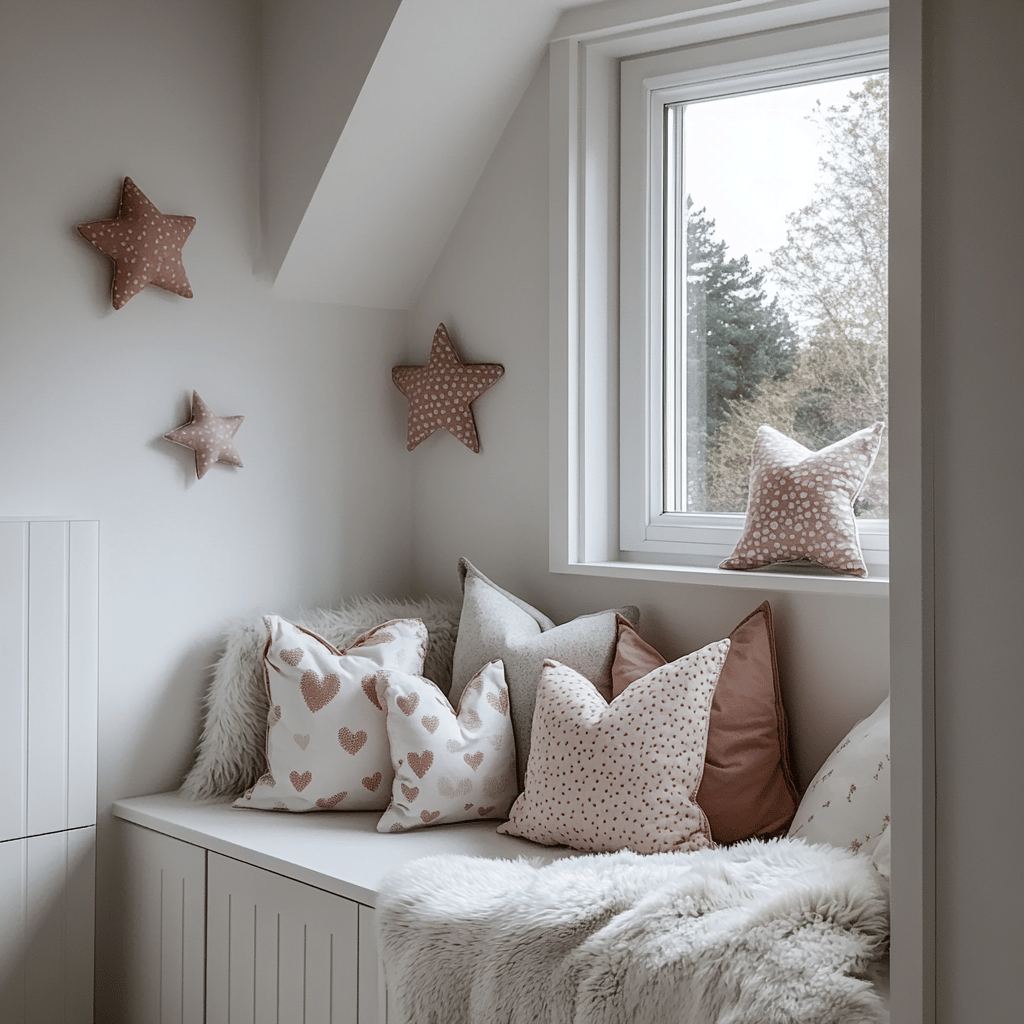
Creating Cozy Corners
One of my favorite aspects of Scandinavian Valentine’s decor is creating intimate nooks for conversation and connection. I achieve this by:
Arranging furniture to create small, intimate seating areas Adding soft lighting at different heights Including small side tables for drinks and treats Incorporating plenty of comfortable textiles
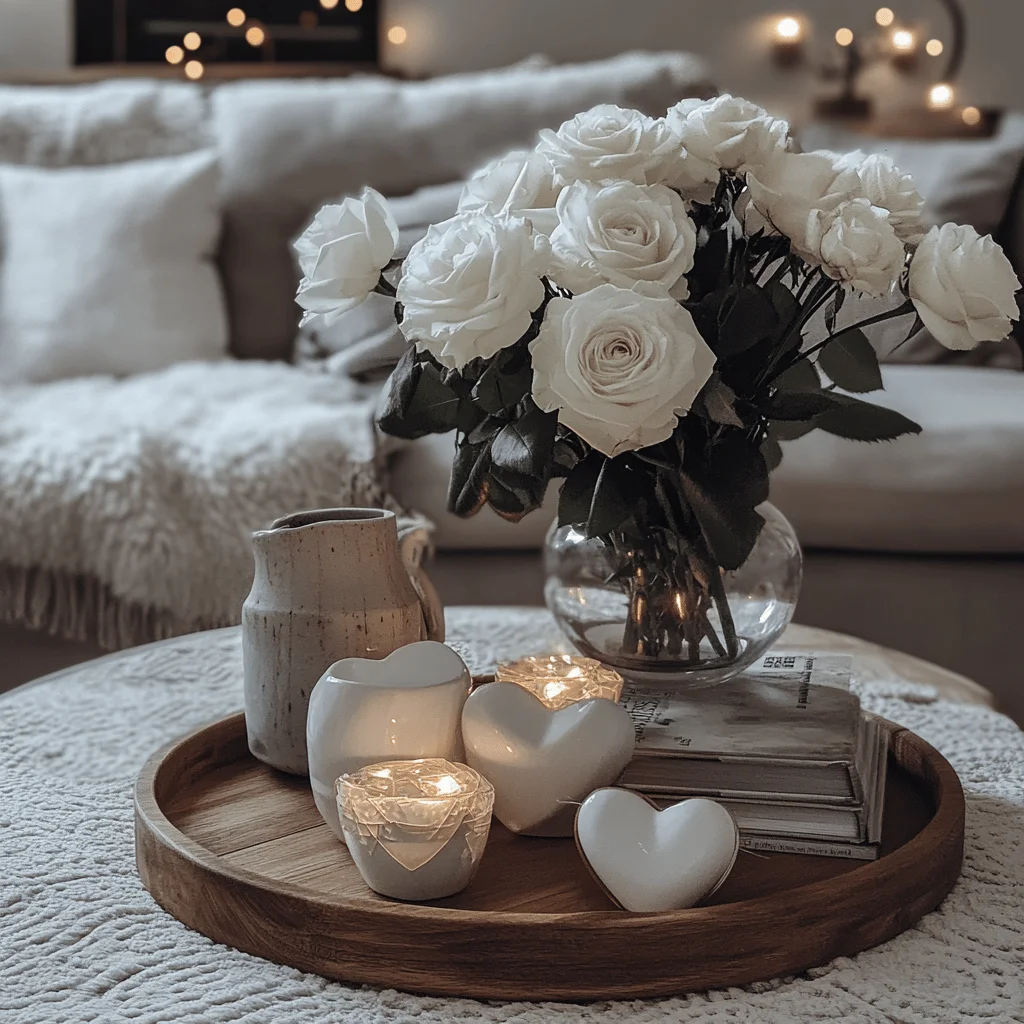
Sustainable and Minimal Approach
True to Scandinavian design principles, I always try to keep sustainability in mind when decorating. This means:
Using natural materials that can be composted or reused Creating decorations that can be enjoyed beyond Valentine’s Day Choosing quality items that will last for years Repurposing everyday items in romantic ways
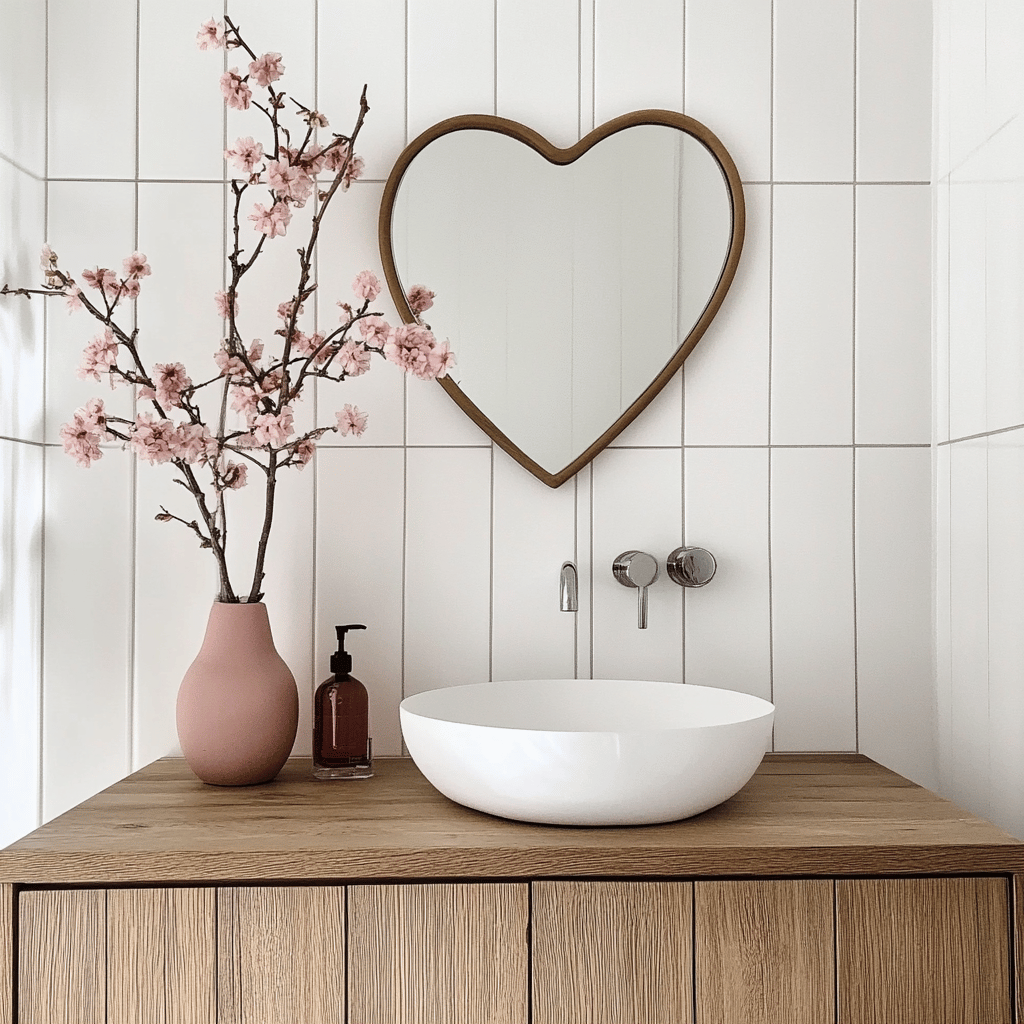
Tips for Maintaining Balance
When creating your Scandinavian-inspired Valentine’s Day decor, I’ve found these guidelines helpful:
Keep the overall look clean and uncluttered Focus on quality over quantity in your decorative elements Blend functional items with decorative pieces Allow for plenty of white space to let your decorations breathe
Incorporating Traditional Swedish Love Knots
I’ve discovered that traditional Swedish love knots (kärleksknut) make beautiful Valentine’s decorations. These simple yet meaningful symbols can be:
Carved into wood as wall decorations Drawn onto paper products Formed with rope or twine as hanging decorations Used as motifs in table linens

Making It Personal
While following these Scandinavian-inspired ideas, I always encourage adding personal touches that make the space uniquely yours. This might mean:
Displaying love letters in simple frames Creating photo collections in matching white frames Including meaningful objects that tell your love story Adding elements that reflect your personal style while maintaining the overall aesthetic
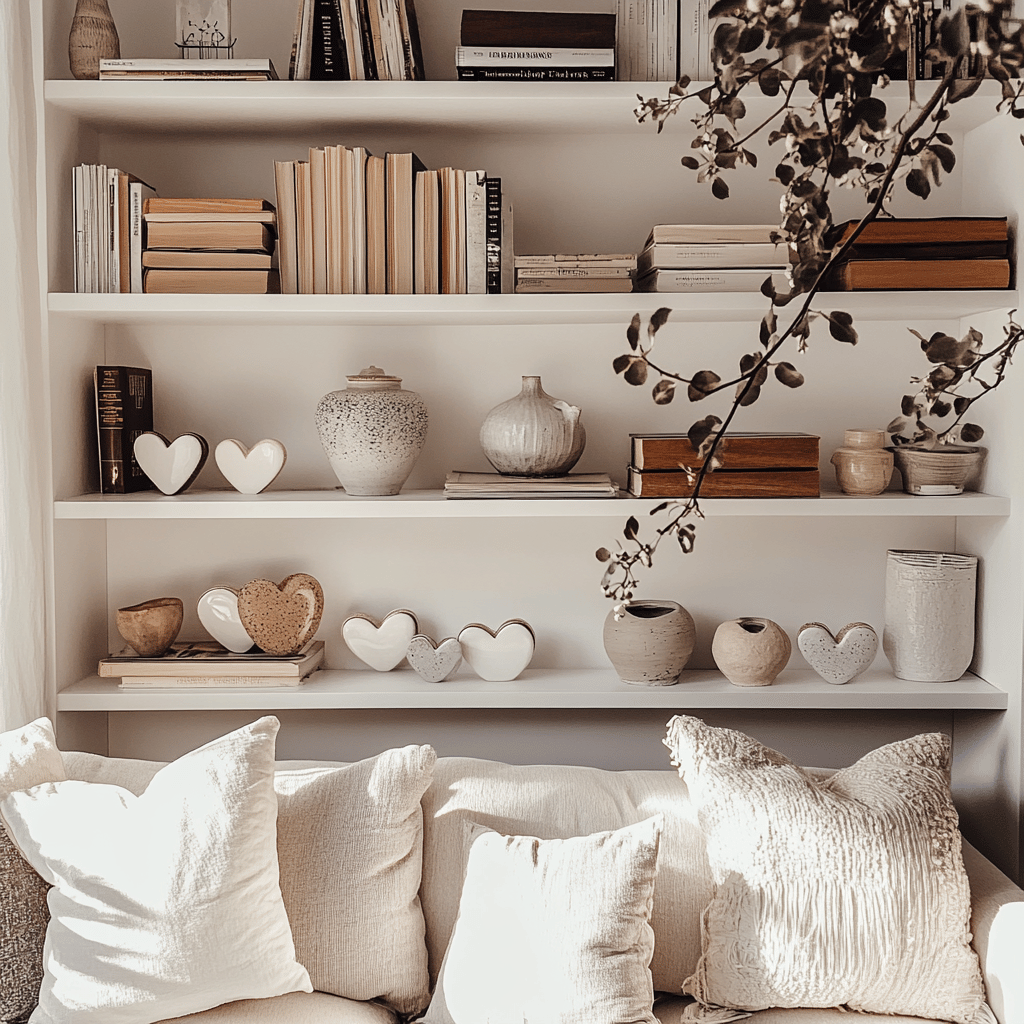
Conclusion: Celebrating Love, Scandinavian Style
After years of experimenting with different Valentine’s Day decor styles, I’ve found that the Scandinavian approach offers something truly special. It creates an atmosphere that feels both festive and peaceful, romantic and refined. By focusing on simplicity, natural elements, and thoughtful details, you can create a Valentine’s Day setting that celebrates love in a way that feels authentic and meaningful.
Remember, the goal isn’t to create a perfect magazine spread but to design a space that encourages connection and celebrates love in a calm, intentional way. Whether you’re planning an intimate dinner for two or decorating your home for the season, these Scandinavian-inspired ideas can help you create a Valentine’s Day environment that feels both special and serene.
I hope these ideas inspire you to create your own Nordic-inspired Valentine’s Day haven. The beauty of Scandinavian design lies in its adaptability – you can take these concepts and make them your own while maintaining that characteristic sense of peace and simplicity that makes Nordic spaces so inviting.
Blending Burlap and Lace for Rustic Romance Valentine Decor

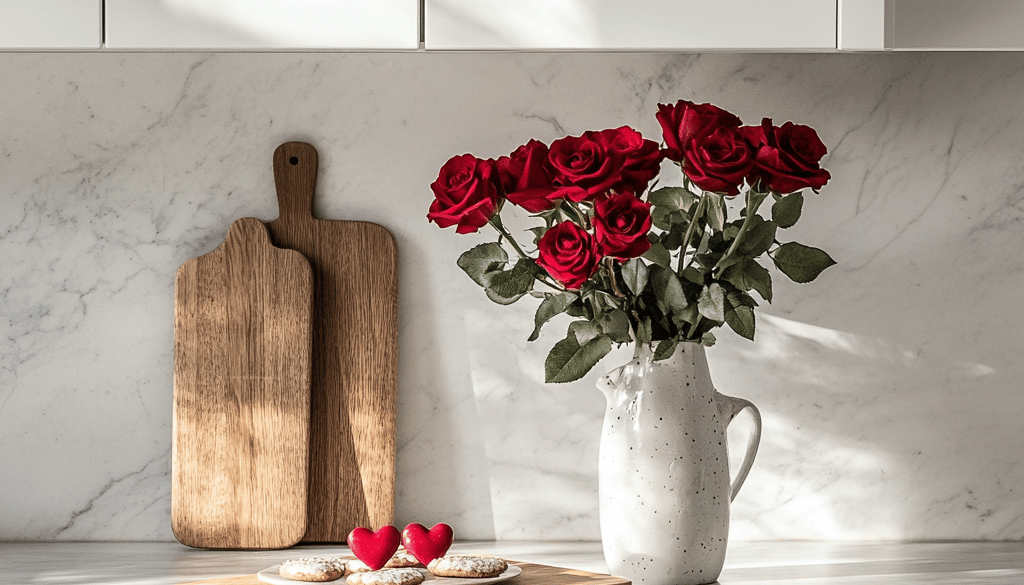
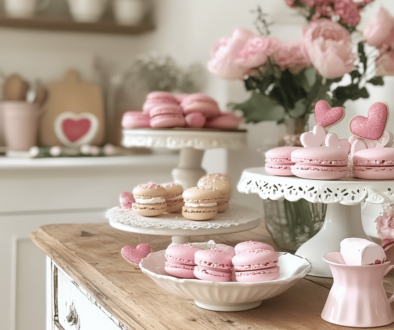
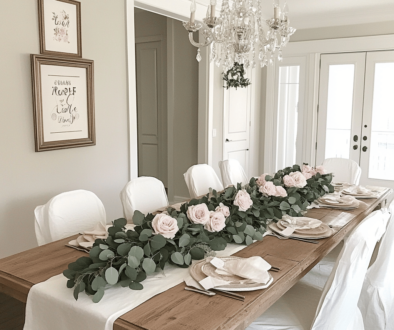
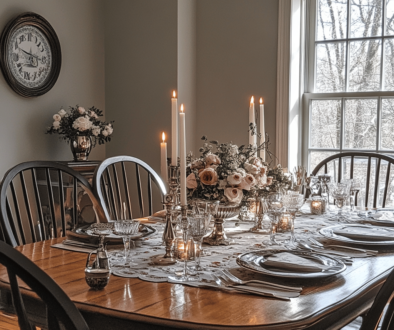
Vintage Valentine’s: Creating a Nostalgic February Home
February 12, 2025 @ 12:50 pm
[…] Scandinavian-Inspired Valentine’s Day Decor Ideas […]
Valentine’s English Cottage: Creating Romance in Every Corner
February 14, 2025 @ 12:17 pm
[…] Scandinavian-Inspired Valentine’s Day Decor Ideas […]
Best Valentine's English Cottage: Creating Romance in Every Corner
July 18, 2025 @ 1:16 am
[…] Scandinavian-Inspired Valentine’s Day Decor Ideas […]
Best Vintage Valentine's: Creating a Nostalgic February Home
November 4, 2025 @ 1:50 pm
[…] Scandinavian-Inspired Valentine’s Day Decor Ideas […]